#osteopathic medicine
Text
In the complex world of healthcare, medical professionals are required to obtain various licenses to practice legally and ensure the safety of patients.
0 notes
Text
Surprise Donation for IUP
Surprise Donation for IUP
A surprise donation by an Indiana University of Pennsylvania alumnus may help set forward health care in the state.
The IUP Distinguished Alumni Awards is supposed to be an evening for the university to take note of the paths its successful students have carved for themselves, honoring distinctions in their various fields. Richard Caruso is one such alumnus, an accounting specialist who attended…

View On WordPress
0 notes
Photo
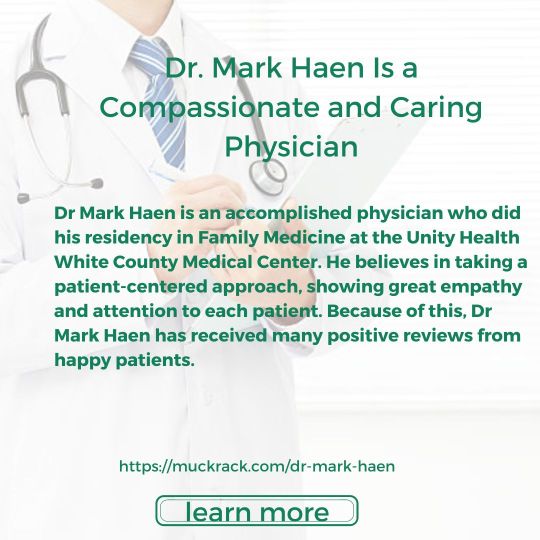
Dr Mark Haen Is a Compassionate and Caring Physician
Dr Mark Haen is a skilled and knowledgeable physician who graduated from Lake Erie College of Osteopathic Medicine. Because he prefers to follow a holistic approach by treating the whole person rather than just the symptoms, Dr Mark Haen is a great listener who is popular with his patients.
#emergency#experienced#emergency care#lake erie college of osteopathic medicine#talented practitioner#health#empathetic#osteopathic#osteopathic medicine#osteopathicmedicine
0 notes
Photo

* * * *
Love is medicine.
Sleep is medicine.
Water is medicine.
Fasting is medicine.
Sunlight is medicine.
Exercise is medicine.
Laughter is medicine.
Gratitude is medicine.
Meditation is medicine.
Forgiveness is medicine.
Natural food is medicine.
Medicine is not always pills.
John Curley
49 notes
·
View notes
Text
Florida’s newest Boards of Medicine appointees wrote an anti-trans letter calling for gender “exploratory” therapy, citing a report of a trans teenager being involuntarily hospitalized for nearly two years
Previously:
Gender Analysis calls for a hearing on the Florida Board of Medicine and Board of Osteopathic Medicine proposed trans youth care bans 64B8–9.019 and 64B15–14.014 F.A.C.
Anti-trans group SEGM’s cofounder Stephen Beck is an executive at Bon Secours Mercy Health, the fifth-largest Catholic healthcare network in the US
Background
On December 2, 2022, Governor Ron DeSantis appointed pediatric endocrinologist Dr. Monica M. Mortensen to the Florida Board of Osteopathic Medicine, followed by the appointment of pediatric endocrinologist Dr. Matthew R. Benson to the Board of Medicine on December 28. Benson previously spoke in favor of the state Medicaid trans care exclusion Rule 59G-1.050(7) at a July 8, 2022 AHCA meeting, and coauthored a September 23 letter to the Boards of Medicine with Mortensen and seven others in support of the trans youth care bans 64B8–9.019 and 64B15–14.014.
Benson and Mortensen’s positions are relevant to an ongoing issue: although the Boards of Medicine voted to advance the trans youth care ban at the November 4 meeting, it has not yet taken effect. Another joint meeting on the ban will now take place on February 10 in response to calls for a rule hearing from Southern Legal Counsel, ACLU of Florida, Gender Analysis and others. Public comment is now open for the upcoming hearing until February 7 at [email protected]. Benson and Mortensen’s letter provides important clues to how they will likely approach this rule and other issues involving gender-affirming care as Board members, and this letter warrants extended analysis.
The September 23, 2022 letter to the Boards of Medicine (“Benson letter”)
Benson and Mortensen’s letter was coauthored with seven other pediatric endocrinologists and pediatric endocrine nurse practitioners working at Nemours Children’s Health Jacksonville: Larry A. Fox, Rehem Hasan, Nelly Mauras, Lournaris Torres-Santiago, Lydia Snyder, Joseph W. Permuy, and Kaley Carroll (“An Open Letter to the Florida Board of Medicine: Regarding the Proposed Rules to Limit the Use of Hormonal and Surgical Care for Gender Variant Youth”, pp. 1308–1313 of October 28 meeting public materials). Benson’s background includes research in the use of GnRH analogues to treat central precocious puberty in cisgender children (Benson et al., 2021), while Mortensen was involved in providing medical and psychological records of an adolescent trans boy treated at Nemours Jacksonville in the case Adams v. School Board of St. Johns County in 2017 (Expert report of Diane Ehrensaft, 21 Sep 2017). The Benson letter repeats several common anti-trans talking points that have featured heavily throughout the rulemaking process, including:
Arguing for any gender-affirming medical treatment of trans minors to be restricted to “high-quality research protocols approved by an IRB” (para 9).
Citing Dhejne et al. (2011), a study of transgender adults from 1973 to 2003, to assert that adolescents who transition are at risk of “persistently high rates of suicide, depression and premature death” (para 7).
Asserting that the practices of Sweden, Finland, France, and the UK support adoption of highly restrictive regulations of trans youth care in Florida (paras 3, 9).
Relying on a flawed and widely criticized review of transition treatments commissioned by the state of Florida (para 8), which was conducted far outside the usual standards for the authors’ evidence reviews (see section 9) as well as outside the normal Florida Medicaid processes for making a coverage determination.
Claiming that evidence supporting transition treatments is “mostly low quality and largely expert opinion, which is among the lowest level of medical evidence”, with “limited data from prospective, controlled trials, which are the gold-standard by which we judge any therapeutic intervention” (para 2).
Arguing for “nonjudgmental exploratory psychodynamic therapy in gender-dysphoric youth” as an alternative to transitioning (para 10).
The letter features a number of erroneous claims and misinterpretations of evidence, and Benson et al. rely on mostly low-quality sources to support their arguments.
Exploring “exploratory therapy”
“Gender exploratory therapy” is a recent term for non-affirming prolonged psychotherapy for trans youth and adults (Ashley, 2022), now frequently promoted by the closely connected anti-trans groups Society for Evidence-Based Gender Medicine (SEGM) and Gender Exploratory Therapy Association (GETA). These groups, emerging in only the last few years, repeatedly assert that “exploratory therapy” is not an anti-gay or anti-trans conversion therapy — while at the same time campaigning against conversion therapy bans (see section 4) and claiming that this psychotherapy may cause gender dysphoria to resolve without a need for gender-affirming treatment.
Benson and Mortensen cite five sources in support of their call for “exploratory psychodynamic therapy”:
We also support the expansion of competent expert psychological support with rapid implementation of nonjudgmental exploratory psychodynamic therapy in gender-dysphoric youth [7–11].
7: Levine, S. B., & Lothstein, L. (1981). Transsexualism or the gender dysphoria syndromes. Journal of Sex and Marital Therapy, 7(2), 85–113. https://doi.org/10.1080/00926238108406096
8: Davenport, C. W., & Harrison, S. I. (1977). Gender identity change in a female adolescent transsexual. Archives of Sexual Behavior, 6(4), 327–340. https://doi.org/10.1007/BF01541204
9: Churcher Clarke, A., & Spiliadis, A. (2019). ‘Taking the lid off the box’: the value of extended clinical assessment for adolescents presenting with gender identity difficulties. Clinical Child Psychology and Psychiatry, 24(2), 338–352. https://doi.org/10.1177/1359104518825288
10: D’Angelo, R., Syrulnik, E., Ayad, S., Marchiano, L., Kenny, D. T., & Clarke, P. (2021). One size does not fit all: in support of psychotherapy for gender dysphoria. Archives of Sexual Behavior, 50(1), 7–16. https://doi.org/10.1007/s10508-020-01844-2
11: Lemma, A. (2018). Trans-itory identities: some psychoanalytic reflections on transgender identities. International Journal of Psychiatry, 99(5), 1089–1106. https://doi.org/10.1080/00207578.2018.1489710
Levine & Lothstein (1981) is a case series of transgender adults in the 1970s; uncontrolled case series are considered one of the lowest “levels” of evidence in most evidence hierarchies (Stony Brook University, 2022). Churcher Clarke & Spiliadis (2019) and Lemma (2018) are also small case series of patients (12 and 2 subjects, respectively). Davenport & Harrison (1977) consists of a single case report of an adolescent, and D’Angelo et al. (2021) is a letter to the editor by six members of SEGM; this expert opinion is generally considered even lower in the hierarchy of evidence than case series or case reports.
While Davenport & Harrison (1977) long predates any formalization of “gender exploratory therapy”, the treatment described appears extreme and alarming. The abstract states that this consisted of “two years of individual and milieu therapy” for a 14.5-year-old trans boy, but the authors later explain that this took place at an inpatient psychiatric facility:
In accordance with those treatment goals, the patient was admitted to an inpatient psychiatric hospital for adolescents, where she remained for 20 months. In the hospital she was involved in triweekly, individual psychotherapy with a male therapist and milieu therapy. The milieu therapy included active intervention by psychiatric nurses and aides, therapeutic school, recreational therapy, and occupational therapy geared specifically toward adolescents. The patients admitted to this service manifest a wide variety of adolescent pathology. Approximately two-thirds of the patients are short-term admissions and one-third remain in residential treatment for prolonged periods of time.
It then becomes clear that this confinement was involuntary and distressing:
Her severe social withdrawal was striking, and she spent much of the time in her room avoiding both staff and other patients. … There seemed to be a quality of stubbornness demonstrated in her refusal of hospital activity and withholding of information in interviews. When first admitted, she refused to eat, and seemed to be using this to pressure her parents to sign her out of the hospital. Signs of anxiety, however, were also clear, and weeks later she was able to acknowledge in psychotherapy that she was scared and did not have any appetite.
…
She talked also about being angry about being in the hospital, having to come to psychotherapy and not knowing what to say. The material about cross-dressing again arose. Her cousin was getting married and there was to be a formal party to which she was invited. However, she knew that this would entail wearing a dress. She marked her ambivalence by saying that one way to avoid the problem would be to run away and then be restricted to the ward.
…
She then returned to the hard line: there was no conflict, she just had gotten the wrong body, when was the therapist going to quit bugging her by keeping her in the hospital? She began missing appointments and only returned when her milieu manager said if she did not go to therapy she would lose privileges, including weekend passes.
…
Her favorite female staff member was leaving, which aroused feelings of abandonment. She said that she wanted to leave the hospital when the staff member did, but her father would not permit it until she saw herself as a girl.
Psychiatric hospitalization from ages 14–16 is a drastic intervention, especially in cases where there isn’t actually any mental or behavioral disorder that disrupts normal functioning to the point of requiring treatment under constant supervision and confinement. TASN School Mental Health Initiative (2016) describes some circumstances in which children may be hospitalized for psychiatric reasons:
Severe mental disorders are associated with a variety of symptoms that disrupt life at home and at school. Not all mental disorders require hospitalization. However, when a child or youth manifests such symptoms as hallucinations, threatens to self-harm or harm others, and/or has not eaten or slept for days, psychiatric hospitalization is a common reaction.
Being trans — identifying as a gender different from one’s assigned sex — is not like a hallucination, endangering oneself or others, or otherwise acting in a way that requires continuous monitoring by professionals. Trans youth and adults accept and embrace their identities as trans people all the time and have done so for decades, broadly to the benefit of their own well-being and sense of self, and generally with no need for psychiatric hospitalization in relation to this or any other matter.
Benson et al. assert in their letter that “data are lacking on the long-term safety and efficacy of the prescribed treatments” of puberty blockers and HRT (para 3), and they contend that “These decisions are too critical and important for young children to make as they cannot easily comprehend the long-term ramifications” (para 14). However, they fail to address the long-term developmental and psychosocial impacts of being involuntarily held in a residential psychiatric facility for almost two years in the middle of adolescence. This near-total separation from one’s family, community, and peers from ages 14–16 jeopardizes an adolescent’s well-being in ways that simply do not apply to trans youth who receive gender-affirming medical treatment while being welcomed in their communities. Tougas et al. (2022) describe a variety of adverse impacts on youth hospitalized in a psychiatric facility:
In the United States and Canada, it is estimated that close to one third are rehospitalized in the year following discharge (2- 6). Moreover, in addition to high social costs (7–8), youth hospitalizations may result in serious academic and social difficulties (e.g., absenteeism, social isolation, stigma, bullying, difficulty managing psychiatric symptoms, low academic performance, motivational problems, dropouts; 9–11).
This is a massive tradeoff of quality of life, particularly when hospitalization is not apparently necessary for any reason. A child kept in an inpatient facility during this time will miss out on countless milestones and memories that are irreplaceable, but this study seems to argue that this is preferable over freely enjoying your teenage years as a trans person with your friends, schoolmates, family, and others in a normal community setting.
The case report is also not an instance of “nonjudgmental” therapy as claimed by Benson et al. Although this patient wanted to leave the hospital, their parents would not allow this “until she saw herself as a girl”. The report goes on to describe hospital staff reinforcing “feminine traits” and “feminine behavior”, encouraging the patient to identify with their mother, and providing “therapy for her dread of femininity, which she had needed”:
Near the end of the first year of hospitalization, we had begun gradually to recognize feminine traits and to reinforce them. Her attempts to avoid being involved with the girls’ group were confronted, and she was seemingly merging with that group.
…
She began to experiment with “feminine” behavior, and this was encouraged and supported by staff.
…
In reality, the father was psychologically and physically absent; his appearance of strength was based on degrading the mother and the maternal role. Certainly the patient’s recognition of the true dynamics made identification with her mother more possible. It helped the patient take another look at the role of women and to see her parents’ marital situation as pathological and not like that of most families.
…
Therefore, she could now participate in the therapy for her dread of femininity, which she had needed but could not previously acknowledge.
Finally, note should be made of the role of the milieu staff in the treatment. They were able early in hospitalization to get her involved in the adolescent issues that are current on an adolescent service. They were very supportive of her feminine behavior and tactfully reinforced it during the second year in hospital when this was appropriate.
It’s clear that any “exploratory” therapy here was done with a fixed destination in mind: identifying with one’s assigned sex, and no longer requesting any gender-affirming care. This was a gender identity change effort directed toward establishing a cisgender identity, which is encompassed by the widely understood meaning of conversion therapy. Major medical and professional organizations recognize that conversion therapy is ineffective and dangerous (Forsythe et al., 2022), and a United Nations independent expert has described conversion therapy as “inherently discriminatory” and “cruel, inhuman and degrading treatment” (UN OHCHR, 2020).
The treatment of a trans adolescent described by Davenport & Harrison may actually constitute a serious human rights violation. Even if an “expansion” and “rapid implementation” of long-term psychiatric hospitalization for thousands of new teenage patients was at all feasible or realistic, its use for this purpose would be completely immoral and ethically unacceptable. Being transgender, and identifying as such, is fundamentally not a treatable “illness”. As a trans woman living in Florida, I fervently hope that this pathologizing perspective will not be represented at the Boards of Medicine by Benson and Mortensen.
Familiar faces: Dr. Stephen B. Levine
The remaining four sources cited by Benson et al. to support “exploratory” therapy at least do not describe involuntarily hospitalizing us in psychiatric wards until we stop saying we’re trans. Regardless, they still fail to provide any high-quality evidence supporting this exploratory psychotherapy in its own right, let alone as any kind of replacement for gender-affirming care. Levine & Lothstein (1981) is a case series of 150 transgender adults — the authors describe a minimum age of 21 for a diagnosis of gender dysphoria. This is a distinctly different population from the trans minors in Florida whose access to gender-affirming care is now being jeopardized by the Boards of Medicine. The authors also do not provide any detailed information on the overall outcomes of their patients who were treated with gender-affirming care or alternative psychotherapies. Instead, the study describes the baseline co-occurring mental health conditions of 51 adult trans women and 18 adult trans men, with 7 case vignettes, and only “overall impressions” of the patient population undergoing gender-affirming surgery at Case Western Reserve University. Only one of these vignettes illustrated an apparent disappearance of gender dysphoria following psychotherapy.
Levine & Lothstein acknowledge the shortcomings in the evidence base for psychotherapies to eliminate gender dysphoria:
These clinical impressions have not been documented by systematic studies. There have been numerous published case reports of apparent “cures,” and fewer papers by clinicians who have seen large numbers of patients but do not report on any one case in considerable detail. The latter group contains accounts of patients who improved in many ways but were not cured of their gender problems.
The psychotherapy they’re proposing is also not a “nonjudgmental” therapy. The authors posit “realistic” goals for trans patients:
Some realistic goals for gender patients include: strengthening the patient’s heterosexuality; decreasing the frequency of cross-dressing; enabling a comfortable acceptance of a homosexual life style.
All of these goals — being straight and cisgender, gay and cisgender, or cis without “cross-dressing” — are formulated with the intention of discouraging gender-diverse expression and identifying as transgender. This, too, is a gender identity change effort that can fall within the definition of conversion therapy.
Notably, the authors provide several arguments against prohibition of gender-affirming care or restriction to narrow clinical research settings as proposed by Benson et al.:
Prohibition of SRS in the United States. Some patients would seek a foreign source, but others might be totally dissuaded from the idea of surgery. Many professionals are familiar with patients who have “seen the light” about their gender identities after some media exposure to transsexualism. If SRS receives less publicity, patients may be forced to find nontranssexual solutions. Such an approach may actually be unethical, since SRS appears to help some patients. Should the moral objections of some citizens deprive others of potentially beneficial medical treatment?
…
Restriction of SRS to centers involved in a multiuniversity research project aimed at answering relevant clinical questions. This rational approach might yield significant new knowledge within five years. Given the current economic climate, however, it seems unlikely that the federal government, or any other granting agency, would fund research on a problem that is relatively rare, personally unsavory, and politically controversial.
What Benson and Mortensen are proposing would similarly amount to a de facto ban on any such care by effectively regulating it out of existence. Far from the “judicious pause” that Benson et al. request, this would be utterly disruptive to the status quo, where trans youth are able to receive these treatments as a matter of private clinical decisionmaking between themselves, their healthcare providers, and their parents or guardians.
After 1981, coauthor Stephen B. Levine has continued to contribute to the scientific literature, public discourse, and legal debate on gender-affirming care and non-affirming psychotherapies. In several cases, Levine has testified against allowing incarcerated trans women to receive gender-affirming surgery, and has more recently offered numerous expert declarations stating that reversible social transition causes persistence of gender dysphoria into adolescence. This claim relies on his misinterpretation of the findings of Steensma et al. (2013), a study which only examined associations rather than causation, and found only a minimal association in trans girls and no association at all for trans boys.
Levine has accepted thousands of dollars from SEGM to write and publish articles against informed consent for gender-affirming care (Deposition in Fain v. Crouch, 27 Apr 2022, p. 30):
Q: Okay. And what about to, did you receive any grants to research or publish about the treatment of gender dysphoria?
A: I received a $5,000 grant to publish, to work on, to develop an article on informed consent which of course involves the treatment of people with gender dysphoria.
Q: And what’s the name of that grant?
A: It’s from the Society for Evidence Based Gender Medicine and I, I, I don’t really have a, I don’t know the answer any further than that, that is a grant number or something, I couldn’t tell you.
Levine frequently coauthors commentary against gender-affirming care with SEGM cofounder Julia W. Mason (Levine et al. 2022a; Levine et al. 2022b; Abbruzzese et al. 2023), and recently coauthored GETA’s “clinical guide” to exploratory therapy with SEGM’s Roberto D’Angelo, Sasha Ayad, Lisa Marchiano, and Dianna T. Kenny, as well as Genspect founder Stella O’Malley (Ayad et al., 2022). Levine also disclosed that he is a clinical supervisor of Miriam Grossman (Deposition in Brandt v. Rutledge, 26 May 2022, p. 34), who has worked as an anti-trans expert for the Florida AHCA and has previously endorsed anti-gay conversion therapy.
In contrast to his public-facing work, Levine was remarkably candid about the state of evidence for non-affirming or exploratory psychotherapy during deposition in Kadel v. Folwell (pp. 109–110):
Q: Okay. Understood. And as for your more conservative approach, can you cite to any studies or research that resulted in better outcomes than people who adhere strictly to the WPATH standards of care version 7?
A: No. This is part of the problem in the field for — although there are alternative approaches, there’s no randomized controlled study of any approach, including those which the standards of care seem to endorse. But the alternative approaches are equally deficient scientifically and are just like many people who are advocates are based on anecdotal evidence.
Q: Sorry. I missed the last part of that. You said your approach as well is not — has no controlled studies or support in that way?
Mr. KNEPPER: Objection, form.
A: Not only does it have no controlled studies, it has no systematic follow up based upon prior agreements about how we’re going to evaluate those things.
Benson and Mortensen’s own source attests, in 1981 and again in 2021, that this alternative of exploratory psychotherapy does not have an empirical basis sufficient to meet their high standards for evidence. In his foreword to a book coauthored by SEGM cofounder Marcus Evans (Evans & Evans, 2021), Levine describes the benefits of these psychotherapies as a matter of “faith” rather than “compelling data”:
What is known about the outcome of psychotherapies for trans-identified young people and adolescents? This book’s erudite chapters about highly defensive intrapsychic development provide evidence that some psychotherapies can enable some patients to decide to desist from a trans identity. Those of us who have faith in the benefit of such work regardless of the patients’ ultimate decisions about their gender expressions do not have compelling data to support our faith.
Where does faith sit within the levels of evidence? “Mostly low quality and largely expert opinion” would be too generous for this. As state regulatory agencies, the Boards of Medicine are intended to make policy and decisions based on compelling data, not unconditional faith. Faith-based policymaking at the Boards of Medicine would be unacceptable under any circumstances, but especially when this is used to disrupt access to real medicine in favor of promoting an unproven alternative therapy that runs on confidence instead of evidence.
A core group: D’Angelo, Syrulnik, Ayad, Marchiano, Kenny, & Clarke (2021)
D’Angelo et al. (2021) is a letter to the editor by six members of SEGM:
Roberto D’Angelo. D’Angelo is president of SEGM, an advisor to the closely related anti-trans group Genspect, and coauthor of the 2022 GETA clinical guide. Before his work with SEGM, D’Angelo served as the adversarial expert psychiatrist on behalf of a trans girl’s disapproving mother in the Australian case Re Imogen (para 4). This is notable as an early instance in which a core SEGM member directly attempted to interfere with a trans child’s gender-affirming care, in favor of imposing “psychotherapy and psychodynamic psychiatry” and “‘agenda free’ psychological exploration” (paras 174, 219). During the case, D’Angelo argued to the family court that Imogen, a 16-year-old trans girl, should be taken off her estrogen for at least one year to undergo weekly “intensive psychotherapy” (para 218). Imogen’s mother had a history of being physically violent to her (para 128) and had attempted to file complaints against her medical providers (para 244). D’Angelo sought to diagnose Imogen as having complex post-traumatic stress disorder rather than gender dysphoria (paras 170, 174) on the basis of “two online interviews” (para 182). Imogen’s mother then argued that Imogen was not competent to consent to gender-affirming care because she had not volunteered to D’Angelo that she had ordered estradiol from overseas (para 196). However, the court recognized that “Imogen did not want any medical information shared with her mother and she knew if she told Dr D’Angelo about the overseas drug, that information would be shared with her mother” (para 196). The court ultimately found that Imogen was competent to consent to treatment, setting a crucial precedent in Australia to protect access to gender-affirming care for youth. Elsewhere, D’Angelo has contributed a chapter to the anti-trans book “Inventing Transgender Children and Young People” (D’Angelo, 2019a), published a case report of a trans adult who “no longer believes he is a man” following psychotherapy D’Angelo (2019b), coauthored commentary with four other SEGM members (Clayton et al., 2021) and coauthored a letter to the editor with four SEGM cofounders (Malone et al., 2021).
Ema Syrulnik. Syrulnik is a healthcare data analytics expert who assisted with Clayton et al. (2021) and received an acknowledgment in Evans & Evans (2021). A 13 Jan 2023 privilege log in the Florida Medicaid trans care exclusion case Dekker v. Weida (previously Dekker v. Marstiller) shows that then-assistant deputy secretary Jason C. Weida emailed Ema Syrulnik on June 29, 2022 regarding “RE: Followup thoughts” (Plaintiffs’ motion to compel production, 20 Jan 2023). The privilege note describes Syrulnik as a consultant: “Email between General Counsel, Chief of Staff, and consultant regarding GAPMS Report.” This correspondence followed SEGM member Romina Brignardello-Petersen and SEGM associate Quentin L. Van Meter contributing two anti-trans expert reports for Florida AHCA on May 16–17, 2022, and the appointment of SEGM member Patrick K. Hunter to the Florida Board of Medicine on June 17, 2022.
Sasha Ayad. Ayad is a psychotherapist whose practice, Inspired Teen Therapy, provides “individualized therapy and parent coaching around adolescent gender identity issues” and advertises tiered monthly subscription memberships for parents of trans and gender-questioning youth. She describes herself as a founding board member of GETA, Genspect, and the International Association of Therapists for Desisters and Detransitioners. Ayad also serves on the board of the Institute for Comprehensive Gender Dysphoria Research with Roberto D’Angelo, Lisa Marchiano, and Stella O’Malley, and is lead author of the GETA clinical guide.
Lisa Marchiano. Marchiano assisted Lisa Littman in developing her “rapid onset gender dysphoria” study (Littman, 2018), defended Evans & Evans (2021) with Roberto D’Angelo (D’Angelo, Marchiano & Gorin, 2022), and is a coauthor of the GETA clinical guide. She has described the emergence of trans youth in terms such as “outbreak”, “psychic epidemic” (Marchiano, 2017), and “modern hysteria” (Marchiano, 2022). Health Liberation Now! has identified Marchiano, Ayad, and Stella O’Malley as constituting a “core trio” substantially responsible for the founding or development of nine highly similar anti-trans groups over the past five years (Leveille, 2022).
Dianna T. Kenny. Kenny is an Australian psychologist who contributed a chapter to “Inventing Transgender Children and Young People” (Kenny, 2019), coauthored the GETA clinical guide, and was paid $75,000 by the state of Alabama to provide an anti-trans expert report in Eknes-Tucker v. Ivey (now Boe v. Marshall). Kenny has described trans youth coming out, and even gender-affirming medical care itself, as “social contagions” (Kenny, 2021).
Patrick Clarke. Clarke is an Australian psychiatrist who coauthored Clayton et al. (2021) and submitted an October 2022 letter to the Icelandic parliament arguing against a ban on conversion therapy, claiming to be “greatly concerned that this Bill will result in ethical, neutral psychotherapies being conflated with Conversion Therapy”.
The article is a letter to the editor rather than a study with any original research findings or systematic synthesis of evidence, and this expert opinion would be among the lowest levels of evidence as described by Benson and Mortensen. D’Angelo et al. is mostly an argument against the findings of Turban et al. (2020) that gender identity change efforts are harmful, against that study’s use of the 2015 US Trans Survey, and against using the USTS as a source generally. This is a criticism of one publication’s methodology, not a refutation or even an engagement with the substantial overall body of evidence showing that sexual orientation and gender identity conversion therapies are ineffective and harmful. Were D’Angelo et al. to prevail in their argument that Turban et al. is an unreliable study, this would still do nothing to provide positive evidence that gender identity change efforts are themselves safe or likely to be effective. Elsewhere, SEGM members Stephen Levine, Ema Abbruzzese and Julia Mason briefly described the “evidence that psychotherapy can ameliorate gender distress in youth” as “low quality” (Levine et al., 2022b), but this is only mentioned informally and in passing. It is not the conclusion of any kind of systematic review that would rank this evidence as being even of low quality, rather than very low quality or completely excluded from consideration.
D’Angelo et al. refer to case reports of psychotherapy resolving gender dysphoria, citing the same Churcher Clarke & Spiliadis (2019) and Lemma (2018) sources as Benson and Mortensen:
Further, GD can present as a transient symptom that resolves spontaneously or in the context of developmentally informed psychotherapeutic treatment. Some common examples of transient gender-dysphoric states include adolescents girls, often on the autism spectrum, experiencing distress around the physical and social changes of puberty or gender-non-conforming young women struggling with shame about being seen as “butch.” These individuals, searching for ways to understand and remedy their distress, can incorrectly attribute their discomfort to being transgender. Several case reports (Churcher Clarke & Spiliadis, 2019; Lemma, 2018; Spiliadis, 2019) indicate that the distress of young people with GD can lessen or resolve with appropriate psychotherapeutic interventions that address the central issues.
Lemma (2018) is a case series of two patients: an adult trans man who stated he did not regret transitioning, and a trans boy who did not want to be in therapy (“She said she was seeing me only because her parents would not let her take hormones unless she saw me”). Churcher Clarke & Spiliadis (2019) is a case series of 12 patients, with crucial limitations; the authors state “the majority had not received a formal diagnosis of GD”, and 7 had not socially transitioned. By the conclusion of this study, 5 still identified as transgender. Worryingly, one of the study’s success stories appears to be a 14-year-old publicly performing masculinity for reasons of safety, while continuing to experience unresolved distress:
He spoke openly about continuing to feel confused about his identity and was still struggling with low mood, although his suicidal thoughts had decreased. However, in relation to gender, Alfie was reflective in talking about the ways he understood himself to be a vulnerable and sensitive young person, alongside the need to embody and perform masculinity differently across different contexts; to be read as a ‘guy’ in particular ways in public (Butler, 2004; Kimmel, 2004). He connected this to preserving his own safety as a non-stereotypically masculine young man. Clinicians understood these changes as signifying Alfie developing a more integrated sense of self.
Coauthor Anastassis Spiliadis serves on the board of the Institute for Comprehensive Gender Dysphoria Research with D’Angelo, Ayad, and Marchiano, and has repeatedly referred to “Gender Exploratory Therapy” or “Gender Exploratory Model” as though these were trademarked terms. In the UK, Spiliadis’ application in 2021 to trademark “Gender Exploratory Therapy” and “Gender Exploratory Approach” was refused. The services intended to be associated with the trademark were listed as training courses, workshops, and seminars, as well as psychotherapy:
Class 41
Training consultancy;Postgraduate training courses;Conducting training seminars;Provision of training;Educational and training services;Training;Training and further training consultancy;Training services;Continuous training;Practical training;Training courses;Providing training;Conducting workshops [training];Organisation of training;Education and training;Providing of training;Organisation of training seminars.
Class 44
Psychotherapy;Psychotherapy services.
Spiliadis and coauthor Anna Churcher Clarke also work at “Explore Consultation”, a group now conducting training seminars on gender exploratory therapy for the South London and Maudsley NHS Mental Health Trust in England. D’Angelo et al. similarly endorse an “exploratory psychotherapy that is neither ‘affirmation’ nor ‘conversion’”, repeatedly positioning this “non-affirmation-non-conversion” as “agenda-free evaluation”, “agenda-free psychotherapy”, or “agenda-free, neutral therapy”. It is nonsensical and unwarranted for anyone to position themselves as being “agenda-free” here, as though they are uniquely outside of a system of influences, assumptions, and attitudes that inform how all of us approach questions of transgender identities and gender-affirming care. In particular, there is nothing agenda-free about “non-affirmation”, because there is nothing agenda-free about refusing to recognize or address a trans person as their name and gender. Certainly it was not “agenda-free” for Roberto D’Angelo to argue before a family court that a 16-year-old trans girl should be deprived of her HRT for a year or more. Remarkably, D’Angelo et al. argue that trans people cannot be trusted when we say we were subjected to conversion therapy, because we may be mistaken or unreliable due to mental illness:
Further, patients with psychiatric diagnoses, highly prevalent in transgender-identifying populations (Gijs, van der Putten-Bierman, & De Cuypere, 2013; Goodman & Nash, 2018; Wanta, Niforatos, Durbak, Viguera, & Altinay, 2019), can potentially experience or misinterpret neutral interpersonal interactions as invalidating or rejecting (Barnow et al., 2009; Beck & Bredemeier, 2016; Gotlib, 1983). Not only does the survey question provide no detail to help discriminate between these essential therapy encounters and unethical conversion therapy, but it arguably biases the recall of neutral encounters toward recall of conversion by using emotionally charged language (e.g., “stop you being trans”) and by conflating recall of religiously motivated encounters with clinical ones. … As we have demonstrated, it is not uncommon for agenda-free, neutral therapy interventions to be experienced by the subjects as non-affirmative. However, non-affirmative is not the same as “conversion,” as the latter implies a therapist agenda and an aim for a fixed outcome (American Psychological Association, 2015).
It is hardly “agenda-free” to argue that cisgender healthcare professionals should be believed over vulnerable trans patients when we say that we experienced conversion therapy. In their conclusion, D’Angelo et al. openly acknowledge their specific agenda for treatment:
We call on the scientific community to resist the stigmatization of psychotherapy for GD and to support rigorous outcome research investigating the effectiveness of various psychological treatments aimed at ameliorating or resolving GD.
In depositions in B.P.J. v. West Virginia State Board of Education and Brandt v. Rutledge, Stephen Levine describes presenting an American Psychiatric Association symposium on May 24, 2022 with Sasha Ayad, Lisa Marchiano, and Ken Zucker (Deposition in BPJ v. WV, p. 89):
A: I forgot to tell you. I also sometimes am invited to give continuing education lectures. And, for example, at the — I’ve given courses, for seven years in a row, at the American Psychiatric Association on sex and love, mostly love I use as — as the title, and we talk about sexual problems and the barriers to loving. And this year’s APA meeting, I — I am presenting a symposium with three colleagues on whether or not this is time to reexamine the best practices for transgender youth. So all those things are — in my review, are — are my teaching.
Q: I was going to ask you about the May presentation. Who are your copresenters for that?
A: Sasha Ayad, Lisa Marciano and Ken Zucker.
Levine later explained the agenda of this psychotherapy — “helping people to desist” (Deposition in Brandt v. Rutledge, p. 238):
A: Yes. I just came from a symposium two days ago where two people talked about their psychotherapy helping people to desist, what we call desist or detransition through psychotherapy. So these are, again, anecdotal reports. Basically psychiatry has a lot of those anecdotal reports.
Q: Who were those clinicians or those that spoke about their experience?
A: You want their names?
Q: Yes, please.
A: One was Sasha Ayad and the other was Lisa Marchiano.
In B.P.J. v. West Virginia, Levine agreed he was trying to dissuade people from being transgender (pp. 237–238):
Q: No, no, I — I — I just want to know the basis for these — these paragraphs, so I appreciate you telling me that. My question is — you know, I read 202 and 203, and you say — you list various perceived harms and challenges from being transgender; is that fair?
A: Yes.
Q: What I’m confused about is, is this premised on the notion that there’s a way to dissuade someone from being transgender so that they don’t have these outcomes?
A: Exactly. I — this is what I’m trying to do.
Additionally, during deposition in Kadel v. Folwell, Levine explained that “people in SEGM are biased in the direction of being conservative and providing psychotherapeutic evaluations of the child, of the teenager and of their parents” (p. 112); in B.P.J. v. West Virginia, he stated “Parents would very much like me to be able to return their child efficiently and quickly … to a cis state” (p. 221). AHCA expert report contributor Quentin Van Meter described his work with SEGM at the God’s Voice conference in June 2022, claiming that SEGM members “all agree” that even social transition is an “abomination” for trans and gender-diverse youth:
[53:23] QUENTIN L. VAN METER: So there are little chinks in the armor that are starting to form. There’s a group called the Society of Evidence-Based Gender Medicine, SEGM. You should look them up because they are a reference, a beautiful scientifically-based reference group, that has a broad clinical spectrum of politics in terms of the backgrounds of these individuals. But what we all agree on is that the affirmation, from social to medical to surgical, is an abomination for these children, it is the wrong thing to do.
Exploratory psychotherapy is not “nonjudgmental”, “agenda-free”, or “neutral” if it considers the outcome of living openly as a trans person to be an “abomination”. Are trans people merely “patients with psychiatric diagnoses” who “misinterpret” this “neutral” stance by psychotherapists as “invalidating or rejecting”? This is the contention of D’Angelo et al., who ask readers to ignore SEGM members’ own documented activities and statements demonstrating an intended therapeutic outcome of desistance or detransition, and instead attribute any appearance of conversion therapy to the alleged mental incapacity of the trans community generally. This insulting dismissal of the trans population and thousands of respondents to the 2015 USTS, as though we are unable to recognize conversion therapy when we are subjected to it, is not agenda-free. It is an agenda of gaslighting a community whose medically necessary healthcare has been directly targeted and disrupted by members of SEGM in several states and countries. Such an agenda should not have any place on the Florida Boards of Medicine, and if Matthew Benson and Monica Mortensen continue to promote this “non-affirming” psychotherapy, every effort must be made to reveal this practice for what it is: anti-trans conversion therapy.
Support Gender Analysis on Patreon
14 notes
·
View notes
Text
#ditki#meded#medicalschool#medicalstudent#medstudent#medicine#medicalscience#white coat#studymedicine#respiratory#usmle#comlex#osteopathic#allopathic#pathology
7 notes
·
View notes
Text
Trying to think of a way to get anyone but the doctor on my next appointment because he makes me uncomfortable AND after more research I'm unsure that what he's doing is even helping
#He's a physical therapist (generally legit) but ALSO an osteopath (literally has alternative medicine in the title on Wikipedia) so like.#So to be fair I doooo feel better (neck jaw ear) but. Could just as well be other factors.#And either way he DOES make me uncomfortable a doctor does not need to comment on my body if it is not health related.#Rosa rambles#Hm. Maybe I will simply cancel tomorrow.
1 note
·
View note
Text
How to Choose the Perfect Pediatrician for Your Baby

"How do I choose a pediatrician for my baby?" This question echoes in the minds of countless parents, emphasizing the weight of this pivotal decision. In the expansive realm of parenting choices, selecting the right pediatrician for your little one stands paramount. The task demands meticulous research and a discerning eye for quality and compassion. For those residing in Arizona, especially in the bustling expanse of the greater Phoenix area, the answer often converges on Agave Pediatrics. Celebrated as the unrivaled #1 pediatric care provider, Agave Pediatrics consistently epitomizes excellence, making it a beacon of trust and assurance for families navigating the journey of pediatric care.
1. Begin with Recommendations:
Often, the best insights come from those who have been there before. Parents within your community, friends, or family members can provide valuable feedback based on their personal experiences. Agave Pediatrics, with its esteemed reputation in Arizona, frequently garners recommendations, making it a trustworthy starting point for many families.
2. Evaluate the Pediatrician's Experience:
The journey of pediatric care demands seasoned expertise. At Agave Pediatrics, a dedicated team of experienced and compassionate pediatric providers stands ready to address your child's unique needs. Their commitment resonates with a promise to treat every child as their own, ensuring that families receive unparalleled care.
3. Assess the Range of Services Offered:
A comprehensive pediatric clinic should offer a broad spectrum of services catering to various needs. Agave Pediatrics excels in this domain, providing an array of services including regular check-ups, same-day sick visits, allergy testing, lactation services, tongue tie services, and more. Such diversity ensures that your child's health requirements, whether routine or specific, are aptly addressed under one roof.
4. Consider the Clinic's Accessibility:
Convenience plays a pivotal role, especially when it comes to pediatric care. Agave Pediatrics, with its strategically located clinics in Glendale, Goodyear, Scottsdale, Phoenix, and Chandler, ensures that families across the greater Phoenix area can easily access their trusted team. This widespread presence ensures that quality pediatric care remains within reach for numerous families.
5. Delve into Patient Feedback and Testimonials:
Patient testimonials and feedback serve as windows into the actual patient experience. Positive reviews often highlight aspects such as attentive care, timely appointments, and a nurturing environment. Agave Pediatrics, with its stellar reputation, consistently garners positive feedback from parents, further solidifying its position as a preferred pediatric care provider in Arizona.
6. Gauge the Pediatrician's Approach to Care:
Every pediatrician carries a unique approach to care. Some prioritize preventive measures, emphasizing routine check-ups and vaccinations, while others may focus on specialized treatments or holistic health. At Agave Pediatrics, a balanced approach ensures that children receive comprehensive care, encompassing preventive measures, timely interventions, and tailored treatments as required.
7. Consider the Clinic's Technology and Facilities:
Modern pediatric care thrives on cutting-edge technology and state-of-the-art facilities. A clinic equipped with advanced tools and facilities can offer precise diagnostics and effective treatments. Agave Pediatrics, committed to delivering top-notch healthcare, continually invests in advanced technology, ensuring that children receive care at par with global standards.
8. Assess the Pediatrician's Compatibility with Your Family:
Beyond qualifications and experience, the pediatrician's compatibility with your family plays a pivotal role. A pediatrician who understands your family's values, concerns, and preferences can offer personalized care, fostering a trusting relationship. Agave Pediatrics, known for its compassionate approach, prioritizes building connections with families, ensuring that every child feels comfortable and valued.
In Conclusion:
Choosing a pediatrician for your baby remains a significant decision, shaping your child's health journey. By considering factors such as experience, services, accessibility, patient feedback, approach to care, technology, and compatibility, you can navigate this decision-making process with confidence. In Arizona, Agave Pediatrics emerges as a beacon of excellence, standing as the #1 choice for pediatric care, dedicated to nurturing the health and well-being of every child.
For more insights into Agave Pediatrics and their services, visit their official website: Agave Pediatrics. Your child's health deserves nothing but the best, and with Agave Pediatrics, you're in trusted hands.
#Tongue Tie#osteopathic manual medicine#well-child visits schedule arizona#lactation consultant phoenix
0 notes
Text
#benefits fish oil omega 3#can i take omega-3 with vitamin D#doctor of osteopathic medicine#does fish oil help hair growth#does fish oil stop hair loss#fish oil benefits#fish oil capsules#fish oil and the brain#how long to take omega-3 for benefits#what age can take fish oil
0 notes
Text
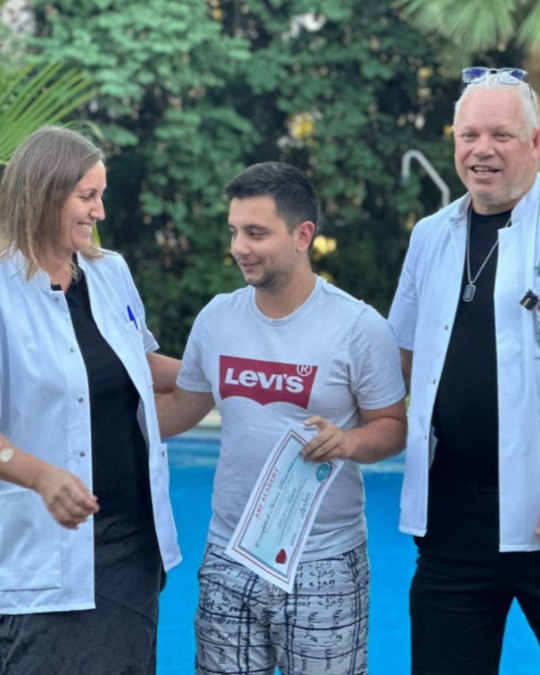

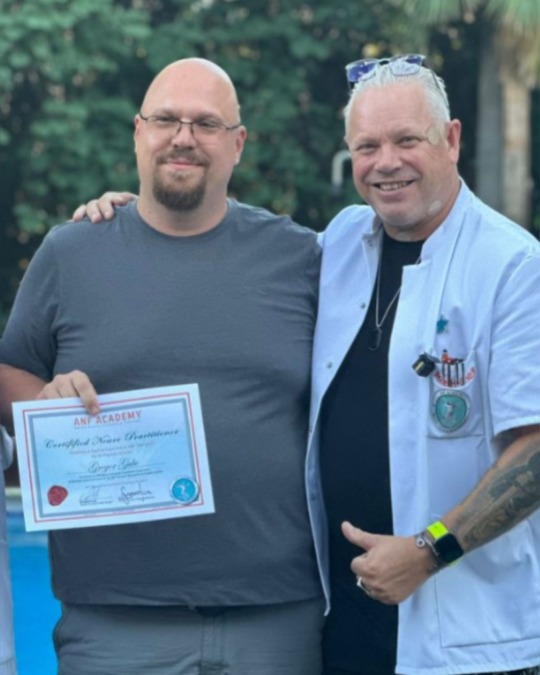
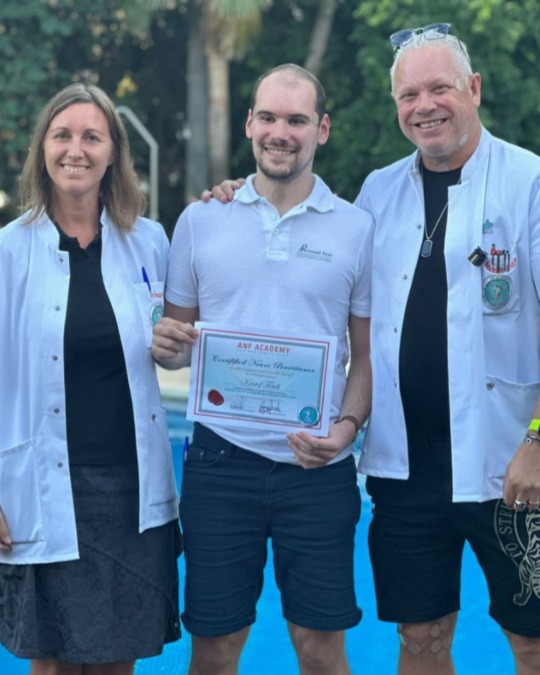
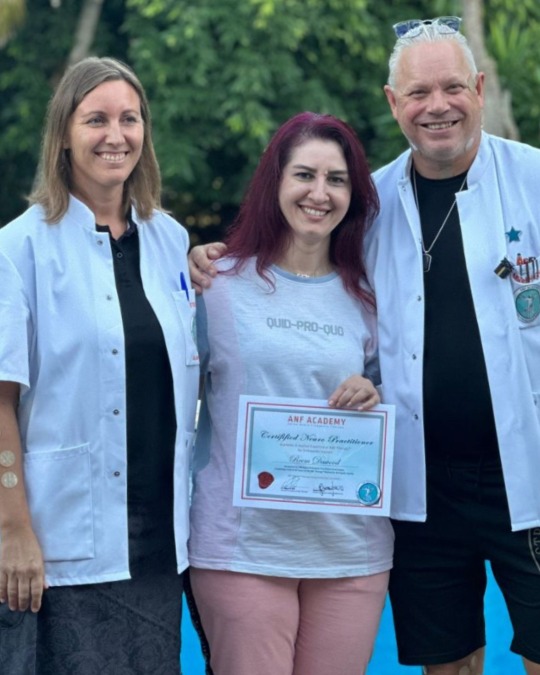
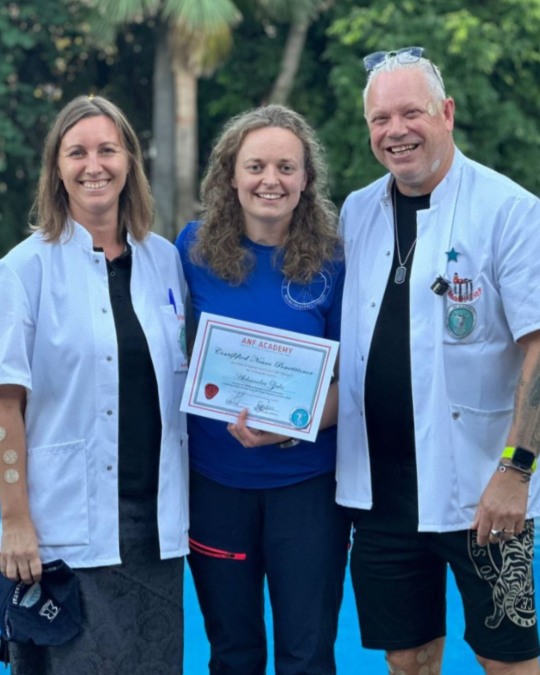
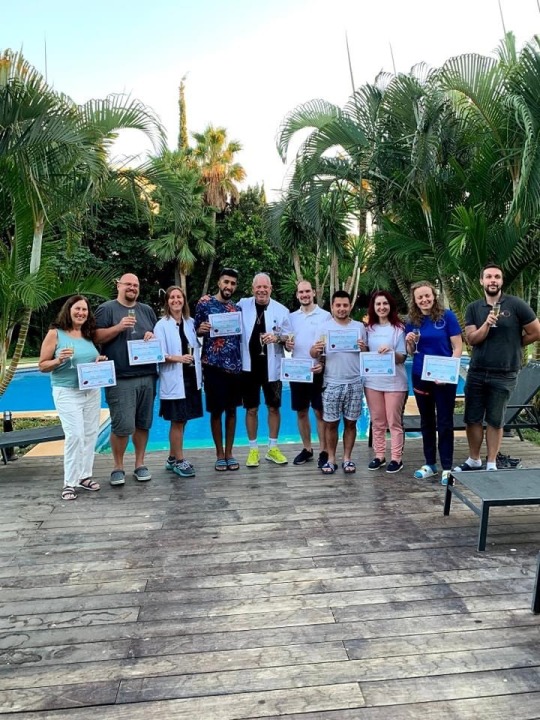
🗼 🎓 Meet our newest Certified ANF Therapists!
Congratulations to therapists who completed the ANF Therapy® Method for Orthopedic Injuries Program! Their dedication and hard work have led them to this significant achievement, equipping them with innovative skills to enhance our holistic and effective pain management and recovery approaches.
We're more than just a team – we're a community dedicated to empowering one another and our patients toward optimal health and well-being.
📎 Learn more about ANF Therapy® at www.anfacademy.com
#inflammation#anf therapy#wellness#pain therapy#chronic pain#frequency therapy#frequency medicine course#healthcare course online#which is the best course in healthcare#pain & inflammation#orthopedic injuries#pysiotherapy#osteopath#doctors#physical therapist#manual therapy
0 notes
Text
1 note
·
View note
Text
Osteopath Hong Kong
Osteopaths managing neck and reverse pain, give a professed evaluation, opinion and a wide range of hands- on ways. Osteopaths can distinguish dysfunction in your body and treat the area using ways similar as stretching and massage for common treatment of the soft tissue( Muscle, Tendons, Ligaments) along with mobilisation of special joints and soft tissues.
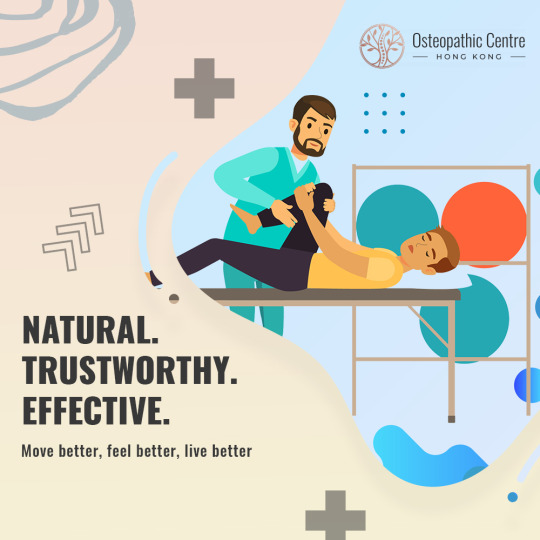
#massagetherapy#nutrition#exercise#osteopathic#riabilitazione#physicaltherapist#osteopathyforhealth#healthylifestyle#spine#terapiamanual#medicine#osteopathe#yoga#mobility#recovery#sportsinjury#healthcare#anatomy#postura#reflexology#meditation#treatment#dryneedling#sportsmassage#osteopathie
1 note
·
View note
Note
My mom wants me to go to an osteopatic clinic for my knee pain but I still don't really understand the different between a physical therapist and an osteopath (if that's the correct name). Are osteopatic practices more science based than chiropractic? Is it safe?
In the US a Doctor of Osteopathy (DO) is a fully licensed doctor with training equivalent to an MD. They have to pass board certification tests like MDs do, and have to perform residencies like MDs do. People who want a science-based but more holistic approach to medicine might be well-served by seeing a DO.
(Note: I see an MD and I get a thoroughly un-science-based approach to a lot of medicine from him; ymmv no matter who your physician is and you should always be willing to look for second opinions if your physician's diagnosis or prescription doesn't sound right for you)
There is some fuzziness around DOs versus "osteopathic practitioners" so if you are going to see an osteopath make sure you are seeing someone who is a DO, which is a protected title. You should be able to look up the clinic's name and find the names of the practitioners in their office and compare it with your regional licensing board.
It's quite likely that if you go to a DO, they will prescribe you visits to a physical therapist the way that an MD might, though they may have some additional manual diagnostic and treatment techniques that an MD wouldn't use.
201 notes
·
View notes
Text
Dealing with painful transformations
With the compliments of the Lunar Foundation: community support by and for werewolves.
Transforming from human to wolf shape and back again, whether voluntary, instinctual, or under the influence of the moon, is often quite uncomfortable. If the transformation causes significant pain, however, is important to know that there are ways to relieve it. These are the most common:
High protein intake
For some werewolves who have a hard time transitioning from their human shape to their wolf shape, the cause lies particularly in the wolf lacking the strenght for a quick transition. This can sometimes be remedied by eating more protein. This does not have to be exclusively meat and contrary to popular belief the meat should not be raw if it is being eaten while in human form.
Physical therapy
Physical therapy and interventions like exercises, stretches, massages, and controlled pressure on painful joints have proven extremely effective in relieving and (partially) preventing the pain caused by transformations. Please check our website to find (health)care professionals with our paw print of approval. This includes physical therapists, chiropractors, osteopaths and masseurs that specialize in working with shapeshifters to handle the physical strain of (involuntary) transformations.
Wolfsbane-aniseed tea
A traditional remedy that by now has significant research to back it up as a safe and effective treatment to promote a faster, less painful transformation in werewolves who shift under the influence of the moon. The wolfsbane lowers the intensity of the transformation while the aniseed promotes certain aspects of the it. This tea can be bought without a prescription at most occult shops and pharmacies. It is safe to give to children, but should not be drunken daily.
Extract of wolfsbane
If the tea is not effective, there are prescription medicines that use wolfsbane in a higher concentration to slow the transformation down to reduce the strain on the body. It should be noted this does not work for individuals who experience pain when changing back to their human shape. These types of medications are generally safe to use regularly, but the dosage should always be monitored by a doctor. Stronger medicines may also contain other active ingredients.
Silver particles
In extreme cases a doctor might prescribe medication that includes (trace) amounts of silver. The intent is to temporarily weaken part of the wolfish aspect to make the transformation less violent. The use of such medication has to be closely monitored, and is ideally not for long term use.
Magical intervention
If the exact cause of the pain has been identified by a doctor or healer, it is sometimes possible to craft a magical amulet, charm or sigil that can offer a solution. The specifics will always depend on the individual. Access our website for a full registry of healthcare professionals, including magical healers, who have the appropriate specialization to treat werewolves.
Painful transformations are most common among werewolves who have just begun transforming and those who are particularly affected by the moon, but it can happen to everyone who shifts between physical shapes. It is also more common during growth spurts or hormonal changes. If you or a loved one are used to painless transformations and suddenly begin experiencing pain, please discuss this with your doctor.
#the lunar foundation#inspired by an ask from a kind anon!#werewolf#werelwoves#urban fantasy#laura tumbles#worldbuilding
116 notes
·
View notes
